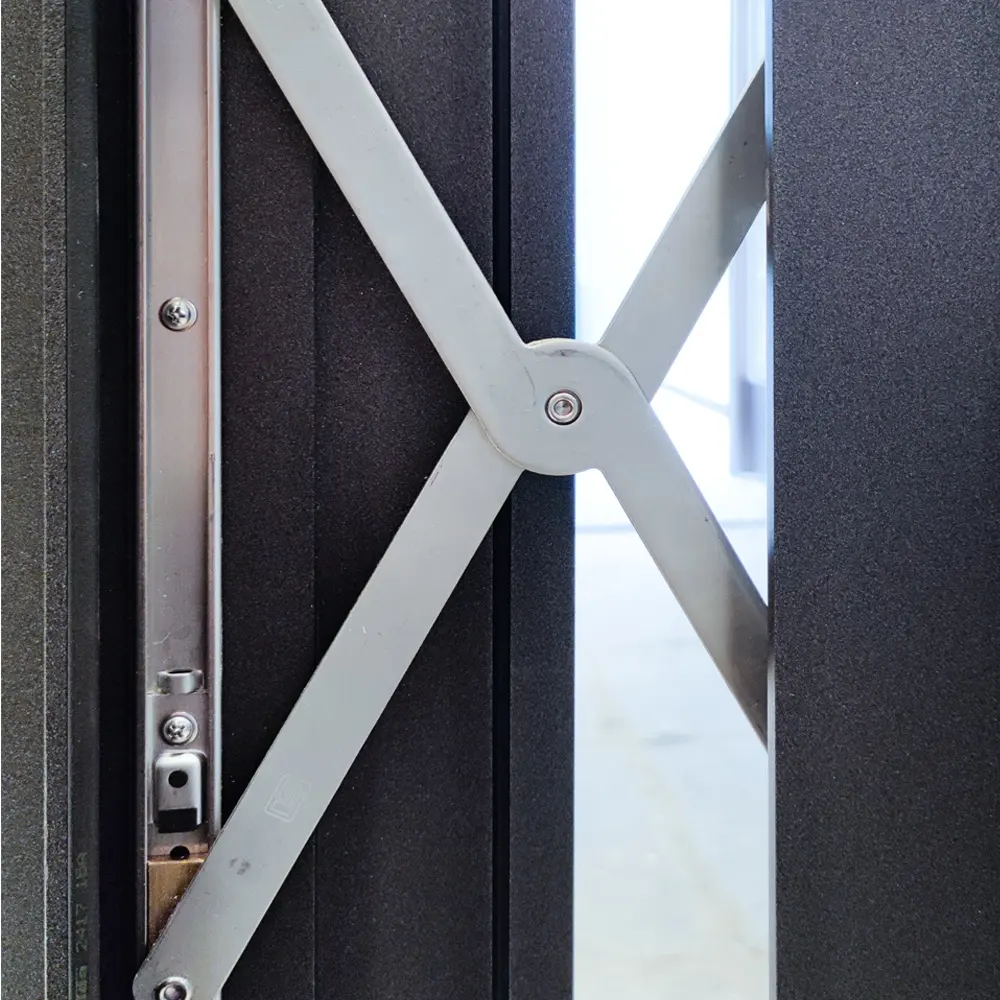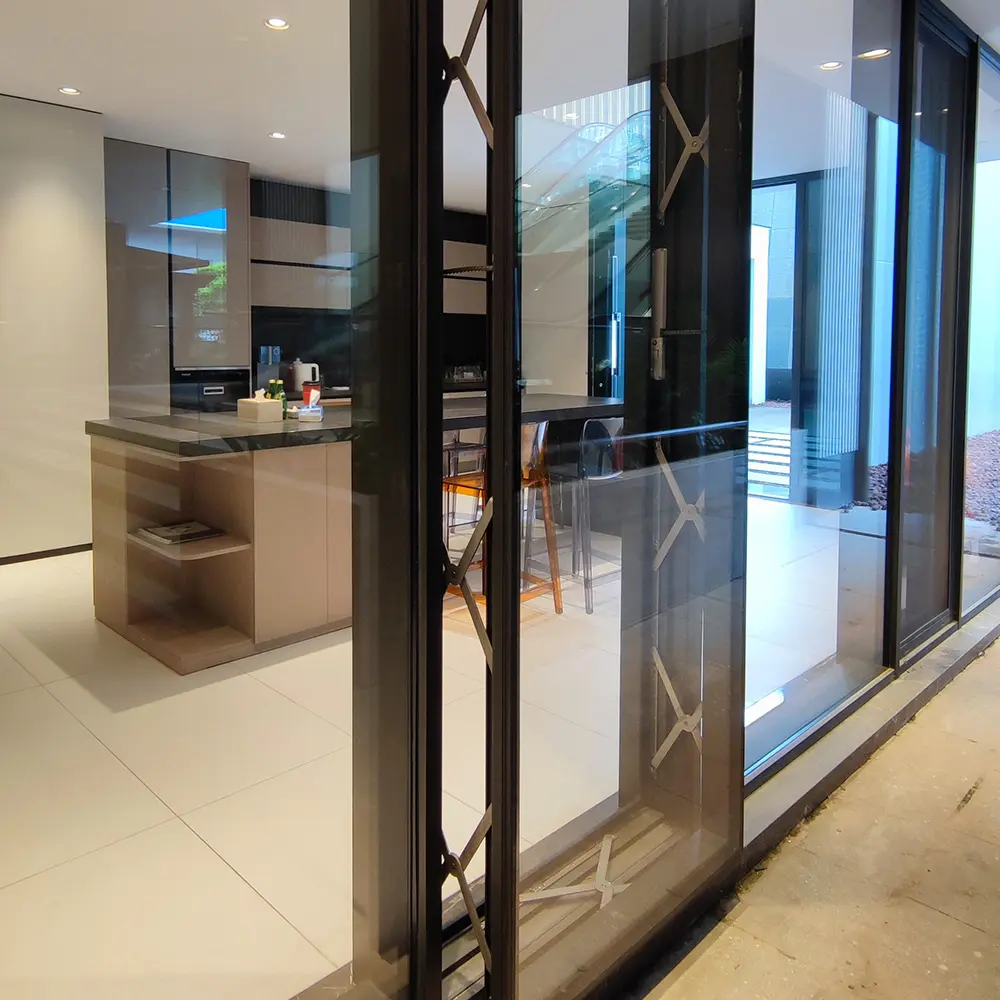Designing the Perfect Façade for Long-Term Value
Architectural design today is more complex and ambitious than ever before. As buildings become taller and smarter, selecting the right exterior systems is essential for achieving structural integrity, energy performance, and aesthetic appeal. Among the many components that define modern buildings, the curtain wall stands out as a fundamental feature. Whether you're developing a commercial tower, a mixed-use building, or a public institution, choosing the right curtain wall system plays a crucial role in ensuring long-term success and sustainability.
Understanding the Fundamentals of Curtain Wall Systems
Definition and Basic Structure
A curtain wall is a non-load-bearing exterior wall system typically made of lightweight materials like aluminum and glass. It attaches to the building structure and serves to protect the interior from external weather conditions while allowing natural light inside. Unlike structural walls, a curtain wall supports only its own weight and the environmental forces acting on it.
Importance in Building Design
Curtain wall systems contribute not only to the appearance of a building but also to its performance. They offer protection against wind, rain, and temperature fluctuations, while enhancing visual transparency and access to daylight. Well-designed curtain walls can help meet energy efficiency targets and support environmental certifications.
Types of Curtain Wall Systems
Stick-Built Systems
Stick-built curtain walls are assembled piece-by-piece on site. The frame and infill materials are delivered separately and installed manually. This method offers flexibility and allows for on-site adjustments, which can be advantageous for complex designs or buildings with irregular shapes.
Unitized Systems
Unitized curtain walls are pre-fabricated in a factory as large panels and then delivered to the site for installation. This method significantly reduces installation time and improves quality control. Unitized systems are especially suited for high-rise buildings and projects requiring fast construction timelines.
Choosing Based on Building Height and Scale
Low- to Mid-Rise Buildings
For buildings under ten stories, stick-built curtain walls are often more cost-effective. These systems allow for customization and are easier to handle at lower elevations. They are also ideal for renovations or buildings with limited access.
High-Rise and Super-Tall Structures
In high-rise construction, unitized curtain wall systems provide better performance and efficiency. Their ability to handle high wind loads, seismic movements, and structural deflections makes them suitable for tall buildings. The reduced need for scaffolding and faster installation also offer logistical advantages.

Performance Considerations
Thermal and Acoustic Insulation
Curtain wall systems can be equipped with thermal breaks, double or triple glazing, and insulated frames to improve energy efficiency. These features help reduce heating and cooling costs while enhancing interior comfort. Acoustic performance is another important factor, especially in urban environments, where curtain walls must block noise pollution.
Air and Water Tightness
Sealing is critical for the performance of any curtain wall. Systems must be tested and designed to resist air infiltration, water leakage, and condensation. Proper gaskets, sealants, and drainage paths ensure that the curtain wall maintains its integrity throughout its lifecycle.
Design and Aesthetic Options
Glazing Types and Finishes
The choice of glass affects both the look and function of the curtain wall. Options include clear, tinted, reflective, frosted, or patterned glass. Low-E coatings and laminated layers can further improve performance. Frame finishes such as anodized or powder-coated aluminum can complement the overall architectural style.
Integration with Building Form
Curtain walls can be tailored to match the curvature, angles, or modular rhythm of a building. Whether it's a simple grid or an organic shape, the curtain wall system should enhance the architectural narrative. Integration with balconies, shading devices, or signage elements is also possible.
Cost and Budgeting Factors
Initial Installation Costs
Stick-built systems tend to have lower upfront material costs but higher labor costs due to on-site assembly. Unitized systems cost more initially but often save on labor and time. The overall cost of a curtain wall also depends on the complexity of the design, glazing type, and structural requirements.
Long-Term Operational Savings
High-performance curtain wall systems can reduce energy bills, maintenance costs, and repairs. The durability and resilience of the materials ensure fewer issues over time. When budgeting, it’s essential to consider lifecycle costs and not just initial expenditures.
Compliance and Safety Regulations
Fire and Seismic Resistance
Curtain walls must comply with fire safety standards, particularly for high-rise buildings. Fire-rated spandrel panels, firestops, and compartmentalization help prevent the spread of flames. In seismic zones, the curtain wall should accommodate building movement without detaching or cracking.
Wind Load and Impact Testing
Proper testing and engineering are required to ensure curtain walls can withstand wind pressures and impact forces. This includes designing anchoring systems, mullion reinforcement, and structural silicone joints that meet international standards.
Customization and Smart Features
Integration with Technology
Modern curtain wall systems can incorporate smart features such as sensors for daylight and temperature, automated blinds, or electrochromic glazing that adjusts transparency. These enhancements contribute to intelligent building management and user comfort.
Adaptive Shading Solutions
Curtain walls can be combined with shading elements like louvers, fins, and overhangs to manage solar gain. These features not only improve energy performance but also contribute to the dynamic appearance of the facade.
Maintenance and Durability
Cleaning and Access Solutions
Access to curtain walls for maintenance must be considered in the design phase. Features like integrated window washing systems or exterior catwalks can simplify upkeep. Glass types with self-cleaning coatings also reduce maintenance frequency.
Lifespan and Material Durability
High-quality curtain walls can last decades with minimal degradation. Materials like tempered glass and anodized aluminum resist UV rays, moisture, and pollutants. Routine inspections and prompt repairs extend the system’s functional life.
Environmental and Certification Goals
Contribution to Sustainability Targets
Curtain wall systems help meet environmental goals by improving thermal efficiency and daylighting. When combined with natural ventilation and renewable energy features, they significantly reduce the building's carbon footprint.
Supporting LEED and BREEAM Standards
By optimizing energy use, reducing artificial lighting, and incorporating recyclable materials, curtain walls support certifications like LEED, BREEAM, and WELL. These achievements enhance the marketability and reputation of the building.
Project Timeline and Coordination
Scheduling and Lead Times
The lead time for curtain wall components, especially unitized systems, must be carefully coordinated with the construction schedule. Early planning ensures timely delivery and avoids site delays. Coordination with other trades is also essential to streamline installation.
Role of Fabrication and Logistics
Efficient logistics and factory precision are key to successful curtain wall implementation. Off-site fabrication allows for better quality control and reduced on-site waste. Delivery sequencing and storage plans must be integrated into the overall project logistics.
Final Selection Strategy
Collaboration with Experts
Selecting the right curtain wall system involves collaboration between architects, engineers, fabricators, and contractors. Expert consultation helps identify the optimal solution based on performance requirements, aesthetics, and budget.
Evaluating Performance vs. Appearance
While visual impact is important, performance should never be compromised. Choosing a curtain wall that balances form and function ensures long-term value and building efficiency. Mock-ups and prototypes can help validate design decisions before full-scale implementation.
FAQ
What is a curtain wall and why is it important?
A curtain wall is a non-structural outer wall that protects a building from environmental elements while enhancing aesthetics, daylight, and energy efficiency.
How do I choose between a stick-built and unitized curtain wall?
Stick-built systems are better for smaller projects and complex designs, while unitized systems offer faster installation and better quality control for larger buildings.
What factors affect the cost of a curtain wall?
Material selection, design complexity, glazing options, and installation method all impact the cost. Long-term energy savings and durability should also be factored into the budget.
Can curtain walls be customized for smart building integration?
Yes, modern curtain walls can include smart glass, sensors, shading systems, and automation for improved energy management and occupant comfort.
Table of Contents
- Designing the Perfect Façade for Long-Term Value
- Understanding the Fundamentals of Curtain Wall Systems
- Types of Curtain Wall Systems
- Choosing Based on Building Height and Scale
- Performance Considerations
- Design and Aesthetic Options
- Cost and Budgeting Factors
- Compliance and Safety Regulations
- Customization and Smart Features
- Maintenance and Durability
- Environmental and Certification Goals
- Project Timeline and Coordination
- Final Selection Strategy
- FAQ

